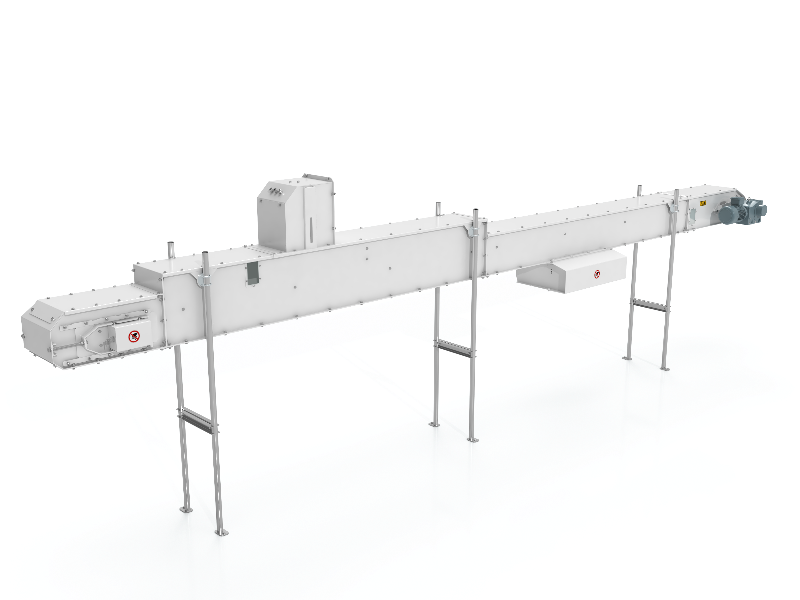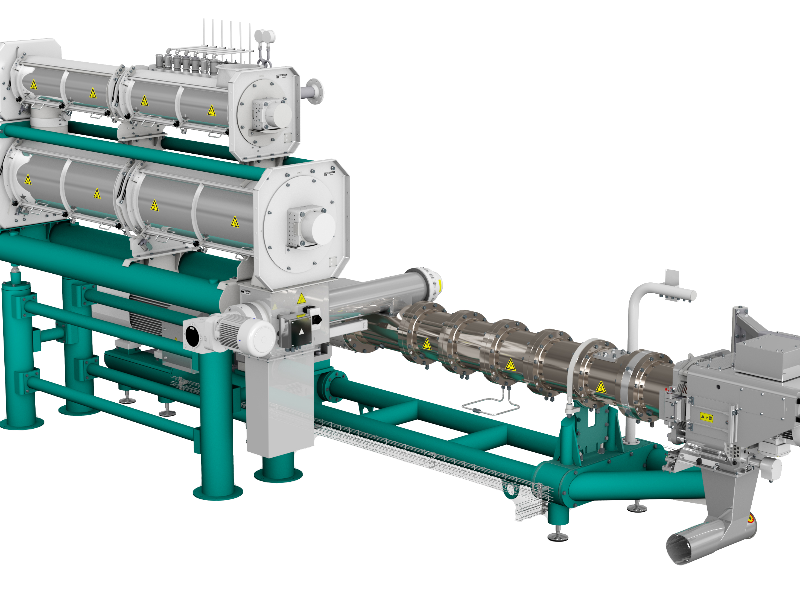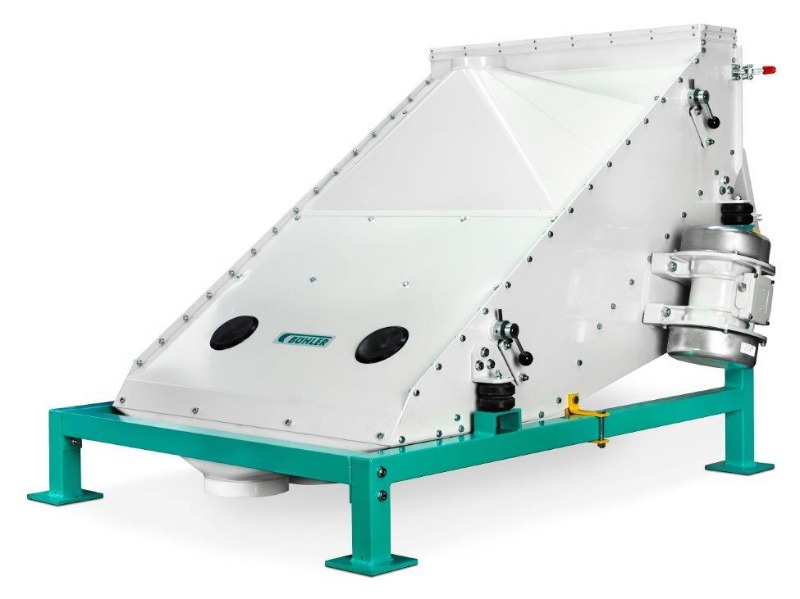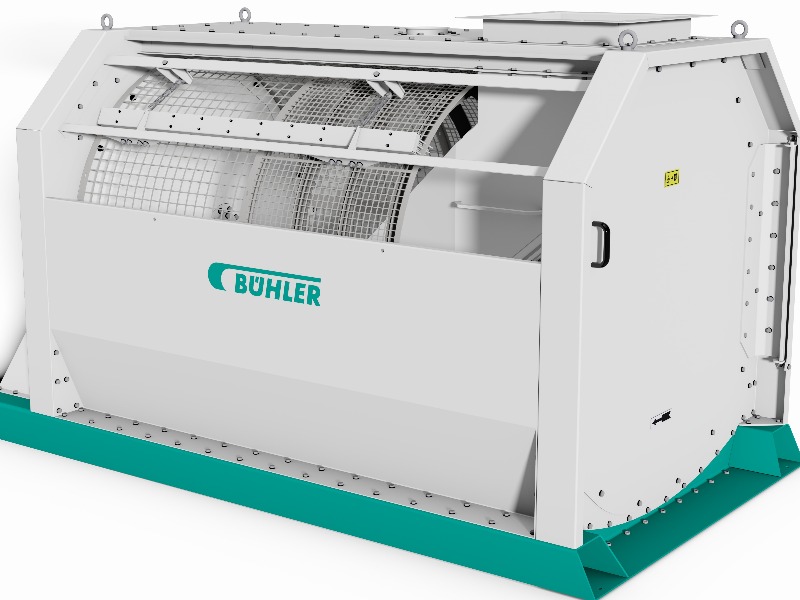

Bühler Group
https://www.buhlergroup.com/content/buhlergroup/global/en/homepage.html?cid=Webpage_Apf_HN-mini-site-CAM
Bühler Group
About company
Who are we?
We are a Swiss family company with more than 150 years in the market, present in more than 140 countries, 30 manufacturing sites and 100 service stations. Allowing us to be a leader in the supply of technologies and solutions for the transformation of grain into flour and food, as well as in the production of pasta and chocolate. We also provide the solution to produce feed, petfood and aquafeed. Our portfolio also includes die-casting, wet milling, and surface coating processes.
Bühler began operations in Mexico in 1959, and currently has headquarters and a service station in the city of Toluca, from which it serves the region of Mexico,Central America and Cuba, with the sale of equipment and spare parts, engineering, automation, technological consulting, roll reaconditioning among others.
How can we support the pet food, fish, and shrimp food industry?
Bühler is capable to supply the complete solution for feed, petfoof and aquafeed, based on the following pillars food safety, efficiency, and sustainability. Therefore, we can provide; from plant design, pre-engineering, installation, to automation services, plant assessments and training, all based on personalized attention from sales, technology, and customer service, seeking to develop our customer´s success with long term relationships.
Our process solutions range from the grain receiving, cleaning and handling systems, storage, ingredient dosing, mixing, fine and wide grinding, extrusion (single or double shaft extruders), pelleting, drying, coating, and cooling. Enabling the production of wide range of products: sizes, colors, textures and ingredients.
We invite you to learn about the success stories of our customers around the world, our solutions and above all to schedule an appointment with our industry specialists, who look forward to serving you.
Products
Company News
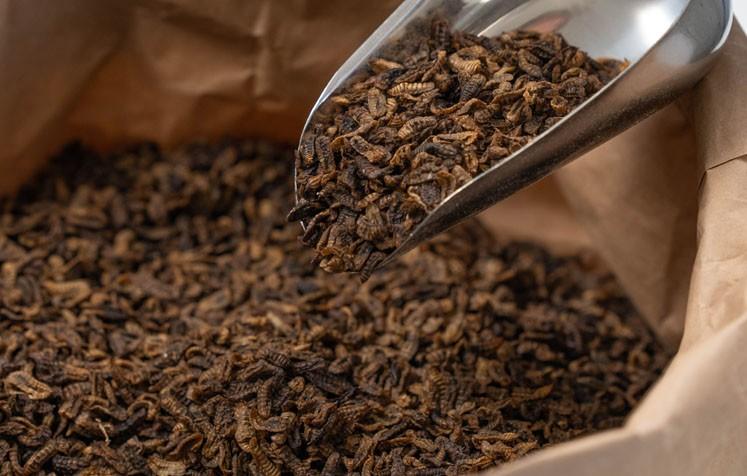 Formulation
Formulation

3+ MIN





06/12/2023
Agroloop commissions Bühler to provide proven insect-rearing tech for animal feed
Swiss company Bühler will deliver its proven crate-based nursery and rearing technology, enabling a quick ramp-up of the plant for commercial production. By the end of 2024, Agroloop plans to launch its first products, contributing to a more sustainable animal feed value chain. Industrial-scale insect plant Following its foundation in 2017 and the operation of a pilot facility, Agroloop got the green light to implement an industrial insect plant in Hungary in 2022. Now, they have selected all execution partners and are working at full speed to construct the plant and get it operational. In the new plant, Agroloop will produce more than 25,000 metric tons of black soldier fly larvae that will be turned into sustainable feed ingredients for the pet food, aquaculture and livestock sectors. The plant is only the first step in Agroloop's strategy to make insect feed ingredients available for the Central and Eastern European (CEE) agribusiness. 'The abundance of food processing by-products presents a unique opportunity for Agroloop's multi-plant rollout strategy in the CEE region, ' says István Nagy, co-founder and CEO of Agroloop. 'We leverage our strategic partnership with the leading regional feed producer UBM Group to improve feed quality and sustainability by creating future-proof feed formulas. This enables Agroloop to focus on rapid expansion and solidifies our position as a key player in the region.' Tech for short ramp-up time Agroloop's insect growth technology has a big influence on plant yield, directly impacting the performance of business. Agroloop has chosen Bühler's nursery and rearing technology for their insect growth system, which has several years of track record in the insect industry. 'We've assembled a technology supplier portfolio to build our plant. Bühler is crucial in providing this design's framework and core components. By choosing Bühler's technology, Agroloop can enter the value chain with the highest standards,' says István Nagy. Sustainable protein in demand In pursuing sustainable and environmentally friendly practices, the CEE region increasingly turns to alternative sources for feed ingredients. By incorporating insects into the feed supply chain, the region can address environmental concerns, reduce dependence on imported protein sources, and contribute to a circular economy approach. In addition, innovative feed formulations containing insects can optimize animal health and growth, thus leading to more efficient livestock production systems. Insects can be reared on agricultural and food processing by-products, transforming these materials into high-quality protein. This approach reduces the environmental impact of this value chain and creates a closed-loop system where resources are reused and recycled. The EU has previously depended on imported protein sources for animal feed, contributing to deforestation and habitat destruction in other parts of the world. By embracing the commercialization of insect-based livestock feed, the region can increase feed efficiency, reduce reliance on external sources, and contribute to local and regional food security. Andreas Baumann, head of market segment insect technology at Bühler, adds: 'The incorporation of insect ingredients in animal feed presents a compelling solution to the challenges faced by the livestock industry.' 'Besides providing nutritious and sustainable protein sources, insects empower local economies to become self-sufficient. That is why insect protein is key to a more sustainable and resilient food system.' Yesterday, Food Ingredients First reported that the UK Edible Insect Association said that European Novel Food regulations impose an 'extremely high barrier to entry for edible insect companies and ignore the sector's potential to build a more sustainable food system.' In other insect-based developments, US-based scientists recently revealed they are targeting dairy waste reduction by mass-producing the black soldier fly that feeds on it and evaluating the insect's potential as a feed for livestock and domestic pets. ' by Bühler
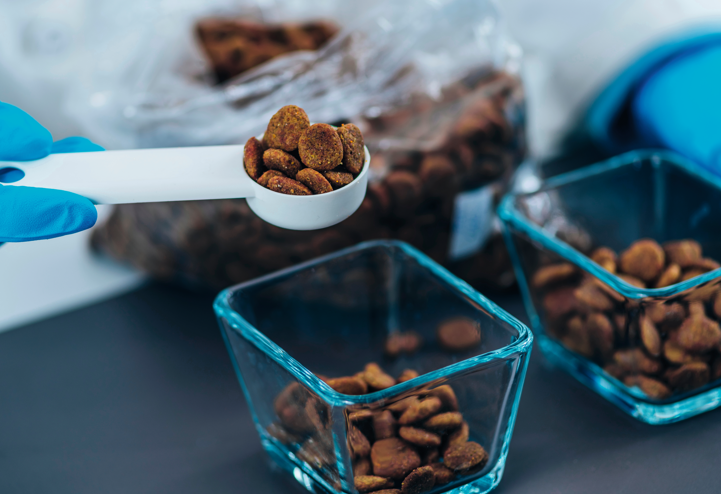 Manufacturing Process
Manufacturing Process

3+ MIN





22/09/2023
Deadly mycotoxins in pet food cost pet health and brand trust, Bühler has an answer
Product recall is expensive One of the major costs of mycotoxin contamination is market recall. Recalling a product from the market is not cheap, in fact, the Grocery Manufacturers Association (GMA) discovered that the average cost of the market recall is USD10 million in direct costs alone. The financial hits of product recall include: disposing of the product, reimbursing customers, and business interruption. The GMA survey showed that 81% of respondents deemed the financial risk of market recall to be 'significant to catastrophic.' Contaminated product damages brand image Financial costs and damage to health are not the only repercussions of mycotoxin contamination. Once the media are aware of the situation, brand image can take a significant hit. For consumers, it takes a lot to repair trust in a brand, and while brand damage is difficult to measure, this can further cost companies millions in lifetime value. Contaminated product can cause mass waste Before the LumoVision, contaminated grain would have been disposed of in large amounts. During testing, if the batch has a high concentration of mycotoxin, in many cases, the entire batch is destroyed. In fact, as few as 2 highly contaminated grains in 10,000 can render an entire batch unsafe. The Food and Drug Association (FDA) estimates that USD932 million is lost per year to crops contaminated with mycotoxin. This removal of the contaminated material may protect the consumer, but it costs businesses and the environment a lot more. What can be done? Bühler SORTEX faced the challenge of mycotoxin contamination head-on. After discovering a breakthrough 'invisible indicator' of contamination on the spectral scale, Bühler created the LumoVision, an optical sorter that can reduce the aflatoxin level by up to 90% (as indicated by industrial trials). This reduction brings many samples to regulation levels, saving companies from the costs of large-scale material waste and market recall. It works by analyzing the color each kernel fluoresces as it passes under powerful UV lighting in the sorter. It is known that contaminated kernels fluoresce a specific bright green color, a substance called kojic acid, which is produced by the Aspergillus fungus at the same time as it produces aflatoxin. LumoVision's proprietary, highly sensitive cameras and a powerful LED-based UV lighting system can precisely detect this color of fluorescence. Within milliseconds of detection, air nozzles deploy to blow contaminated kernels out of the product stream. When dealing with toxins, early intervention is critical. This is not only important in reducing the toxins consumed by pets, but also to lower wastage and the environmental footprint. Without proper cleaning and sorting, poisonous mycotoxins can cause large-scale wastage of materials, mass market recalls, and harm to pets. Dr. Gerardo Morantes, Director of Food Safety-Americas Region at Buhler, had the following to say: 'Mycotoxins are a worldwide concern. However, technology made possible by Bühler SORTEX enables a preventative solution, meaning that mycotoxins can be dealt with early, stopping the spread and removing the contamination to meet regulatory standards.' Without intervention, mycotoxin contamination can bare a large cost for businesses, including, brand reputation, market recalls and material waste. With the SORTEX LumoVision, brands can stay profitable, customers can stay happy and pets can stay safe. For more information on how Bühler and LumoVision are kicking out mycotoxins, visit their webpage. Source: All Pet Food Magazine
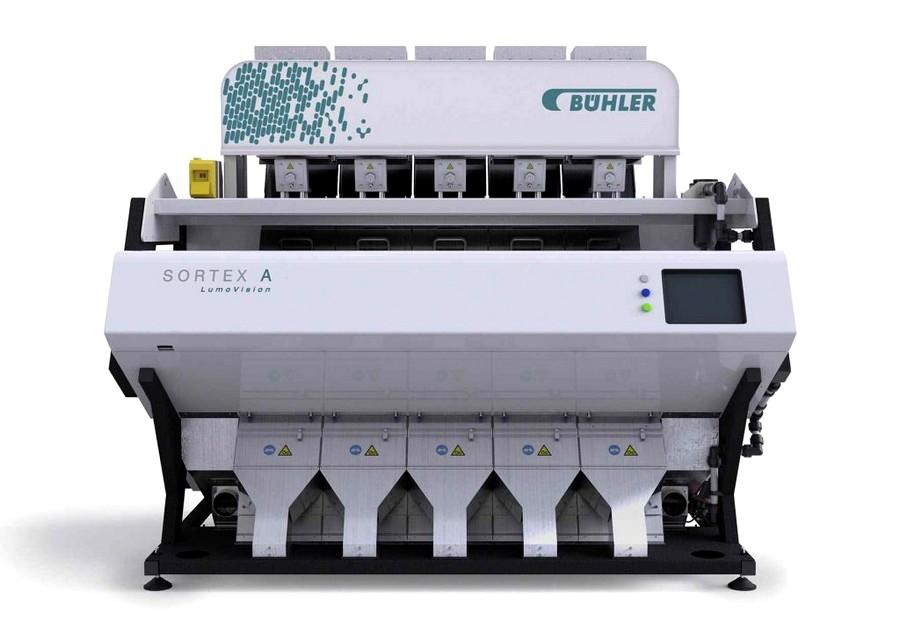 Laboratory
Laboratory

3+ MIN





17/08/2023
Bühler offers solution to reduce mycotoxin levels in pet food
Mycotoxins, a poisonous chemical found in the corn used in pet foods, are causing animal sickness and irreparable brand damage. To solve this issue, SORTEX LumoVision, a solution developed by Swiss technology group Bühler, uses the spectral scale to kick out mold from pet food, keeping the costs of market recall down and pets safe. In 2021, the FDA (Food and Drug Administration) alerted customers of fatal levels of aflatoxin, a strand of mycotoxin that attacks the liver, found in 1,000 lots of pet food. From the bad batch, it is reported that 130 dogs died. This statistic provoked lawsuits and anger from dog owners and the wider industry. However, the damage of mycotoxin contamination does not stop there. RECALLING PRODUCT IS EXPENSIVE One of the major costs of mycotoxin contamination is market recall. Recalling a product from the market is not cheap, in fact, the Grocery Manufacturers Association (GMA) discovered that the average cost of market recall is USD10 million in direct costs alone. The financial hits of recalling product include: disposing of the product, reimbursing customers, and business interruption. The GMA survey showed that 81% of respondents deemed the financial risk of market recall to be 'significant to catastrophic'. CONTAMINATED PRODUCT DAMAGES BRAND IMAGE Financial costs and damage to health are not the only repercussions of mycotoxin contamination. Once the media are aware of the situation, brand image can take a significant hit. For consumers, it takes a lot to repair trust in a brand, and while brand damage is difficult to measure, this can further cost companies millions in lifetime value. CONTAMINATED PRODUCT CAN CAUSE MASS WASTE Before the LumoVision, contaminated grain would have been disposed of in large amounts. During testing, if the batch has a high concentration of mycotoxin, in many cases, the entire batch is destroyed. In fact, as few as 2 highly contaminated grains in 10,000 can render an entire batch unsafe. The Food and Drug Association (FDA) estimate that USD932 million is lost per year to crops contaminated with mycotoxin. This removal of the contaminated material may protect the consumer, but it costs businesses and the environment a lot more. WHAT CAN BE DONE? Bühler SORTEX faced the challenge of mycotoxin contamination head-on. After discovering a breakthrough 'invisible indicator' of contamination on the spectral scale, Bühler created the LumoVision, an optical sorter that can reduce the aflatoxin level by up to 90% (as indicated by industrial trials). This reduction brings many samples to regulation levels, saving companies from the costs of large-scale material waste and market recall. It works by analysing the colour each kernel fluoresces as it passes under powerful UV lighting in the sorter. It is known that contaminated kernels fluoresce a specific bright green colour, a substance called kojic acid, which is produced by the Aspergillus fungus at the same time as it produces aflatoxin. LumoVision's proprietary, highly sensitive cameras and a powerful LED-based UV lighting system can precisely detect this colour of fluorescence. Within milliseconds of detection, air nozzles deploy to blow contaminated kernels out of the product stream. When dealing with toxins, early intervention is critical. This is not only important in reducing the toxins consumed by pets, but also to lower wastage and the environmental footprint. Without proper cleaning and sorting, poisonous mycotoxins can cause large-scale wastage of materials, mass market recalls, and harm to pets. Dr Gerardo Morantes, Director of Food Safety-Americas Region at Buhler, had the following to say: 'Mycotoxins are a worldwide concern. However, technology made possible by Bühler SORTEX enables a preventative solution, meaning that mycotoxins can be dealt with early, stopping the spread and removing the contamination to meet regulatory standards.' Without intervention, mycotoxin contamination can bare a large cost for businesses, including, brand reputation, market recalls and material waste. With the SORTEX LumoVision, brands can stay profitable, customers can stay happy and pets can stay safe. By Bühler Group
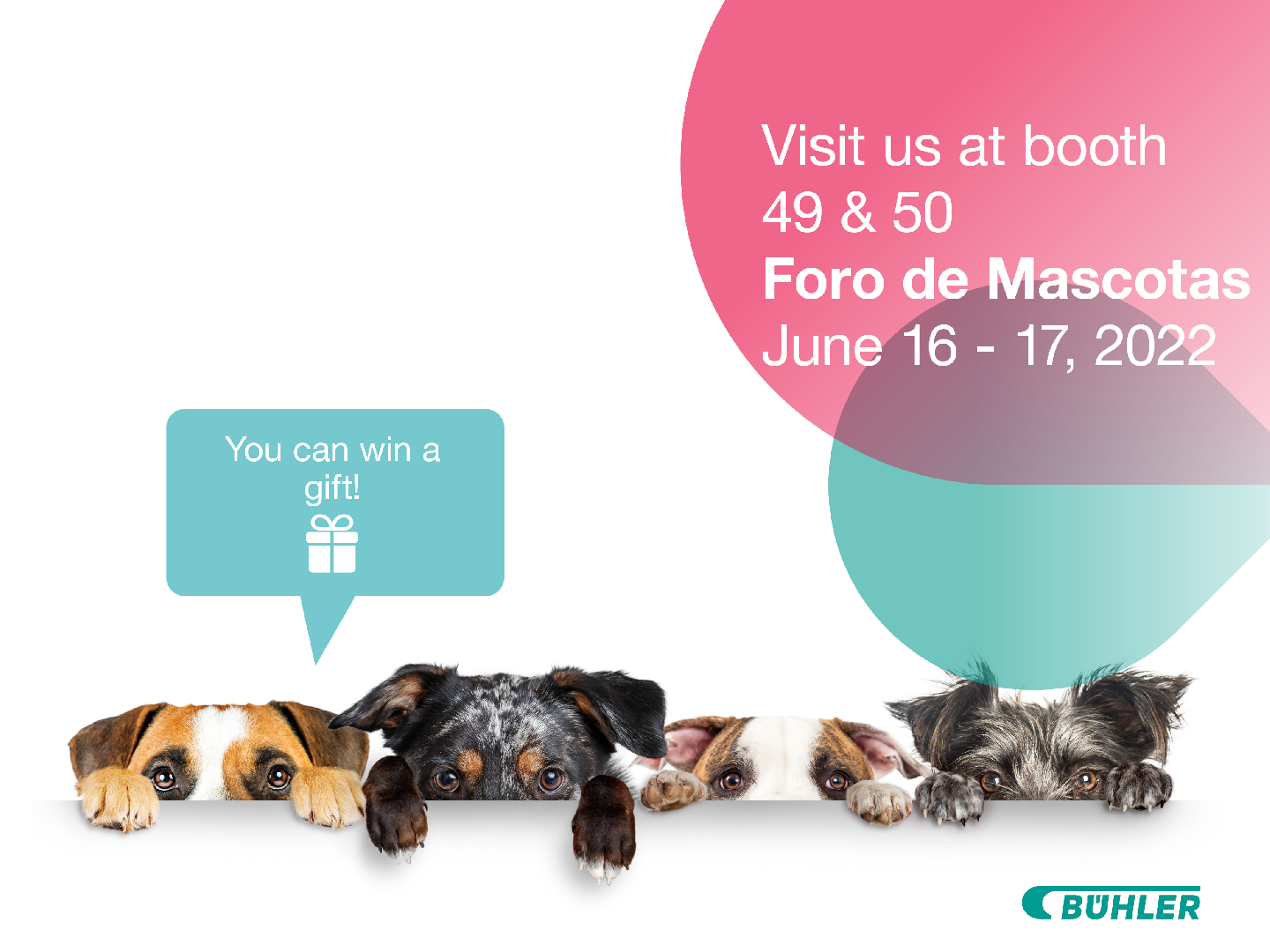 Market Information
Market Information

1+ MIN





30/05/2022
Bühler invites you to participate in an event focused on trends in pet food industry!
Foro de Mascotas, June 16 & 17, Expo Guadalajara,Guadalajara, Jalisco. Bühler invest part of its profits in research and development of solutions that accomplish the needs of their clients, developing versatile, flexible, and automated solutions to produce final products with different shapes, sizes, moisture levels and more. In recent times, the food industry has tightened its food safety policies, without leaving behind pet food and aqua feed industries, driven mainly by more informed consumers who became more demanding in the quality of the products they buy. During this event you will be able to enjoy talks focused on the main trends, best practices, and the possibility to meet different suppliers of the industry. Show you some of our Products Multi-impact technology Single screw extruder SmartFeed Dryer Source: Bühler Group
 Market Information
Market Information

1+ MIN





27/04/2022
Bühler will participate in Pet Food Forum
Discover how Bühler's new Single-screw extruder can change the way you look at pet food production. Its versatile modular design offers real benefits such as minimized downtime for greater profitability and intelligent recipe memory for consistently high product quality. Visit us and our experts will be happy to assist you!
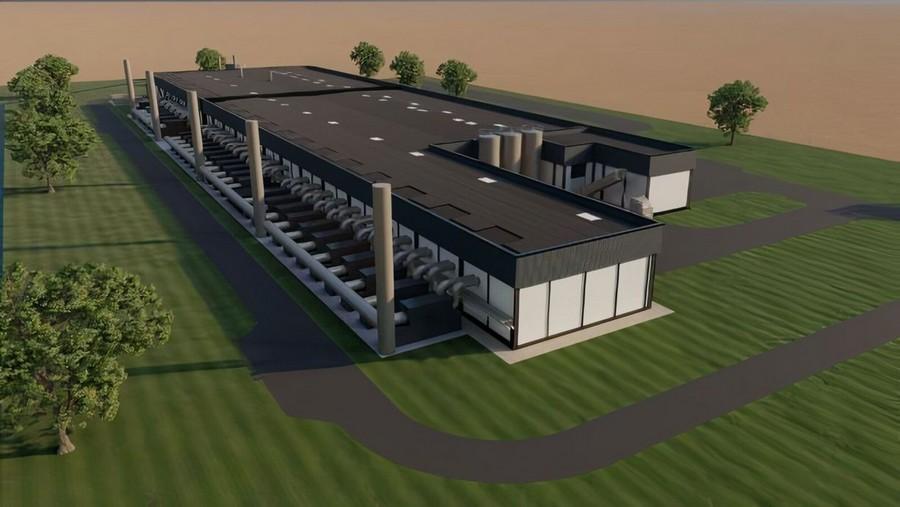 Animal Origin
Animal Origin

3+ MIN





23/12/2021
Bühler builds large-scale insect plant for Agronutris in France
This collaboration is a major milestone for both organizations. It reinforces Bühler's commitment to ambitious targets that will help mitigate climate change and build a more sustainable food system and supports Agronutris' goal to establish itself as a world leader for sustainable nutrition. The plant is planned to go into operation in 2023. The 16,000 square meter insect plant in Rethel, France, when operating at full capacity, will process up to 70,000 tons of organic residues and produce high-quality protein for the aquaculture and pet food markets every year. 'With the launch of this new site, Agronutris is entering its industrial deployment stage. The facility of Rethel will be our springboard for the further industrial development of our activity,' says Mehdi Berrada, CEO of Agronutris. 'Bühler is a world-leading company with a tremendous experience in the food and feed sector. We trust in their capabilities to support us in the insect industry. This allows our teams to focus on our core activities: insect biology and operational management of our production flow. Our research and development activities make for our competitive advantage.' Bühler's solutions for Agronutris will cover the entire supply chain. This includes feedstock preparation to provide safe, palatable, and nourishing feed to the larvae and a fully automated larvae growth system with sophisticated climate control. Bühler will also deliver the processing line to efficiently transform the grown larvae into protein meal and lipids with consistent quality, as well as the frass (excrement) handling system for a secure offtake of the rearing residues. In addition, Bühler will be responsible for the entire automation and the timely project execution. The latter encompasses engineering, procurement, manufacturing, supply, installation, and commissioning. 'The new project with Agronutris is a milestone for us. It confirms our goal of establishing ourselves as a key solution provider for the insect industry and to increase the inclusion of insect proteins in animal feed. Our solutions contribute to more sustainable feed supply chains,' says Andreas Baumann, Head of Market Segment Insect Technology at Bühler. Growing Demand To feed 10 billion people who are expected to live on our planet by 2050, about 250 million metric tons of additional protein will be necessary every year. This is an increase of 50% compared to today. The industry must address this challenge with a more sustainable production of existing sources of protein as well as alternative sources for direct human and animal consumption. Edible insects can play a unique role in upcycling food waste streams to high-quality proteins, which makes them an increasingly important source of protein while being environmentally friendly. The market of insect proteins as feed is expected to significantly grow in the next ten years. The total turnover of insect feed operators is expected to achieve EUR 2.2 billion per year by the end of the decade. This growth will be led by two main sectors: the aquaculture sector, which will make up for 30% of sales volumes of insect producers by 2030, and the petfood sector, which will account for 40% of the insect protein sales volumes by 2030. Agronutris aims to contribute to the emergence of this industry and to become one of the global leaders of the sector. The growth of its team (joined by entomologists and agro-industry experts), its recent fundraising of EUR 100 million, and the collaboration with major companies such as Bühler, are some of the factors that will allow the company to live up to this ambition. Bühler is committed to reduce water, energy, and waste by 50% in its customers' value chains by 2025. This will help mitigate climate change and be the foundation of a more sustainable food system. Insects offer a unique opportunity. They are not only a healthy source of protein for food and feed, but they can be fed on waste, therefore converting food waste into protein. And their frass can be used as a fertilizer. That is why they are an important pillar in Bühler's strategy to become the leader in sustainable proteins for food and feed. by Buhler group All Pet Food



